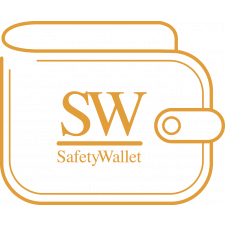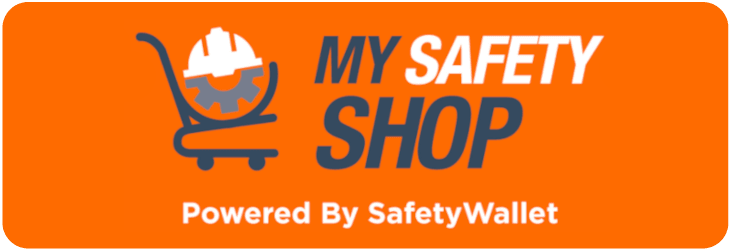Audit of Occupational Health and Safety
Introduction to a Health and Safety Audit
The nature, as well as the delivery of Audits of OHS, vary and as a result, employers must determine the reason for the OHS Audit as well as what they hope to find when choosing an audit.
The purpose of an OHS Audit is to identify both strengths and weaknesses in the OHS program of a workplace. Areas such as accountability, policies, hazard identifications, control, training, and numerous other factors must be considered.
This is done by assessing how well the OHS Programme complies with legislation, regulations, guidelines, and other well-established best practices.
Furthermore, an OHS Audit can also:
- Identify areas where improvement is needed to protect workers from both injury and illness.
- Ensure legislative compliance with the Occupational Health and Safety Act 85 of 1993 and other legislation.
- Benchmark OHS practices, and
- Determine the rewards and penalties which are administered by regulatory and certification bodies.
When conducting an audit, another imperative factor to ensure is that the OHS Audit is conducted effectively. Therefore, the audit on OHS must be conducted in a systematic and constructive manner.
As a Value-added service to our existing clients and potential clients who have downloaded any of our free products using a download link, we are now offering Free Virtual Consultations with one of our friendly Consultants.
To make use of this service, MAKROSAFE clients should contact their practitioners to discuss oppertunities. SafetyWallet clients should request a consultation from the website as well, or on the chat and any new clients should visit MAKROSAFE or SafetyWallet sites and fill in a contact us form to request assistance.
Preparation for OHS Audit
Enter the basic details
Before an audit can be conducted, it is necessary for some basic information to be collected such as the audit programme manager’s information and the information of the auditee, thus the employer being audited.
In addition, notes must be made to indicate previous audit along with the findings of such. The reason for the audit must also be provided. Should there be a certain number of people involved with the audit, their details must also be captured.
Context of the OHS Audit
To understand what the context of the OHS audit is, the SafetyWallet auditor must consider the following factors:
- Business goals as well as objectives
- Relevant external as well as internal issues
- The needs as well as expectations of interested parties, and
- Information security and confidentiality requirements of the OHS program.
Objectives of the OHS Audit
The SafetyWallet Practioner must establish the objectives for the audit. Any individual audit objectives provided must be consistent with the context of the employer being audited. The following factors must be taken into consideration:
- The extent of the OHS programme which must be audited.
- The capacity of the OHS programme to assist the organization to meet relevant regulatory requirements.
- The effectiveness of the OHS programme in producing intended results.
- Opportunities for improvement in the OHS programme, and
- The sustainability of the OHS programme pertaining to the overall strategic context as well as business objectives of the employer being audited.
Scope of the OHS Audit
The scope of the OHS Audit must be consistent with the context of the employer being audited. To define the scope of the audit, the following factors must be considered:
- The location where the audit will take place.
- The function that the audit will serve.
- Activities to be audited.
- Processes that must be audited, and
- The timeframe of the audit.
Criteria for the OHS Audit
Should an individual audit be conducted, the criteria thereof must be defined and used as a reference against which compliance will be determined.
Such criteria may include the following:
- Relevant Policies and Procedures.
- Processes and standard operating procedures.
- Performance objectives along with Key Performance Indicators (KPI).
- Statutory as well as any other relevant requirements.
- Management system requirements such as ISO standards, and
- Internal codes of conduct.
Ensuring that OHS audit monitoring systems are in place
The SafetyWallet auditor must ensure that tools, as well as systems, are in place. This will ensure that adequate monitoring of the audit and all relevant activities is in place. Some of the relevant activities which must be monitored may include some of the following:
- Timelines of the audit, whether deadlines, as well as schedules, are met.
- The performance of audit team members.
- The successful implementation of action plans and their effectiveness.
- Feedback from the employer as well as other key and relevant participants.
- The documentation of audit activities.
Reviewing of documented information
The SafetyWallet auditor must obtain and review all documentation of the employer’s OHS programme. The review of such documentation is an approval task, and all subsequent documentation can be approved, rejected, and rejected with notes.
The audit cannot continue unless all the documentation has been approved. This will assist in the preparation for individual audit activities. It also serves as a high-level overview from which the SafetyWallet auditor can better identify and understand areas of concern or non-compliance.
Documented information, as an umbrella term, can refer to some of the following:
- Processes, either recorded on paper or with software.
- Management system documents as well as records, and
- Previous audit reports.
Preparing an audit plan
The SafetyWallet auditor must prepare an audit plan for the OHS audit. The plan can involve some of the following components as well as considerations:
- Roles and responsibilities of each member of the audit team.
- Risk-based approach to planning the audit.
- Scheduling as well as coordination of audit activities.
- The scope and complexity of the audit.
- Sampling techniques to be used in collecting evidence.
- Opportunities for improvement.
- Risks of inadequate planning, and
- Impact of the audit on the employer’s activities.
After the audit planning has been done, each audit team member can be assigned their own duties.
Initiating an OHS Audit
There are several important components that must be covered when the audit is initiated. These include:
- Making an arrangement with the employer prior to the audit.
- Conducting an open meeting with the employer and all relevant parties before the audit.
- Ensuring that all relevant information relevant to the audit is accessible.
- Collecting of evidence (context of the organization or company).
- Assess the understanding of the organisation along with its context.
- Assess the needs as well as the expectations of the relevant interested parties.
- Assess the scope of the OHS programme.
- Collecting evidence on leadership by assessing the leadership of the OHS programme, policies, roles, responsibilities, and authorities, and consultation and participation of workers.
- Collecting evidence on planning such as actions to address risks and opportunities, actions to address and identify hazards, determination of legal and other requirements, planning action, and OHS programme objectives.
- Collecting evidence on support by assessing OHS resources, competence, awareness, communication procedures, and document information.
- Collect evidence on operations by assessing operational planning and control, procedures for eliminating hazards and risks, procedures for the management of change, procurement, and emergency preparation and response.
- Collect evidence on performance evaluation by assessing systems for monitoring and measuring performance, evaluation of compliance, internal audit processes, and OHS management review procedures.
- Collecting evidence on improvement by assessing an incident, non-compliance, corrective action procedures, and continuous improvement procedures.
Audit Findings – reviewing evidence as well as findings
The SafetyWallet auditor must review all the evidence which is provided and collected and note their findings on each.
Concluding the OHS Audit
Prepare the OHS Audit report
The SafetyWallet auditor must issue the audit report within 24-hours of the audit to ensure that the employer being audited is provided with the opportunity to take corrective actions.
The SafetyWallet auditor must prepare the audit report and present it to the employer. The audit report is the final record of the OHS Audit. It is a high-level document that clearly outlines a complete, concise, and clear record of everything of note that occurred during the audit.
Presenting the Audit report
In a meeting with the employer and all relevant key personnel, the SafetyWallet auditor will present the health and safety audit report. During this session, the SafetyWallet auditor will place special attention on the following:
- Addressing any special occurrences or situations which may have impacted the reliability of the audit conclusions.
- Ensure that all in attendance are familiar with, or have access to, the complete audit report.
- Ensure that the employer is familiar with the audit process.
- Confirm the timeframe of the audit follow-up actions.
- Provide findings, feedback, recommendations, and opportunities for improvement.
- A Health and Safety Certificate can be issued if client meets all criteria to very Health and Safety Compliance.
If you have any questions about the Health and Safety Solutions we have to offer, please feel free to Contact Us.
Click on the image below to find a SafetyWallet Solution that suits your business (Branch/Site specific) and get the 21 benefits along with the subscription:
Various Health and Safety Audits and many other great Health and Safety Solutions are available on our E-commerce platform My Safety Shop.
 MAKROSAFE / SAFETYWALLET / MY SAFETY SHOP are all in Partnership.
MAKROSAFE / SAFETYWALLET / MY SAFETY SHOP are all in Partnership.





Comments (6)
Interesting Article. Thanks for sharing this wonderful Blog.
2022-09-20 14:07:33Dear Rubini Thank you for your comment, we appreciate your positive feedback...
2022-09-21 10:55:12QCTO has requested me to furnish ohs aUDIT Report so that they can give me fuull accreditation.sUPPLY ME WITH THE QUOTE.
2024-12-04 11:30:39I have the same, also looking for an OHS Audit.
2024-12-09 14:41:51Great article! Thank you for sharing !
2023-03-22 18:56:37Dear Lulama Thank you for reading and commenting on our blog, your positive feedback is highly appreciated...
2023-03-23 07:23:22I would like to know regularly should a person be audited for HSE What is the notice period to be given for a HSE audit
2022-08-04 08:44:40Dear Garth I trust my email finds you well... Thank you for connecting with us and your comment via our website... OHS Compliance Audits should be annually... Strictly speaking, there should not be any notice period as the site must be compliant at all times, this means that H&S must be maintained throughout the year... Please do follow the links below and if you have any questions or need help, please do contact me and I will gladly assist you... MAKROSAFE: https://www.makrosafe.co.za/ SAFETYWALLET: https://www.safetywallet.co.za/ MY SAFETY SHOP: https://www.mysafetyshop.co.za/
2022-08-22 08:05:19I do understand and accept that OHS Compliance Audit should be conducted annually. I was put in a corner being asked as to, where is that written? Your help in this regard will be appreciated.
2024-05-02 13:26:39Dear Thabo There isn't an universally mandated law stating OHS audits must be annual. However, strong arguments exist for yearly audits: Compliance Certificates: Many safety consultancies issue certificates valid for a year after an audit. Legal Requirements: While not explicitly stated as "annual" audits, most Occupational Health and Safety (OHS) Acts mandate workplaces to maintain a safe environment. Yearly audits ensure ongoing compliance. Best Practices: Annual audits help identify new hazards arising from workplace changes and ensure your OHS program stays effective.
2024-05-03 07:49:57